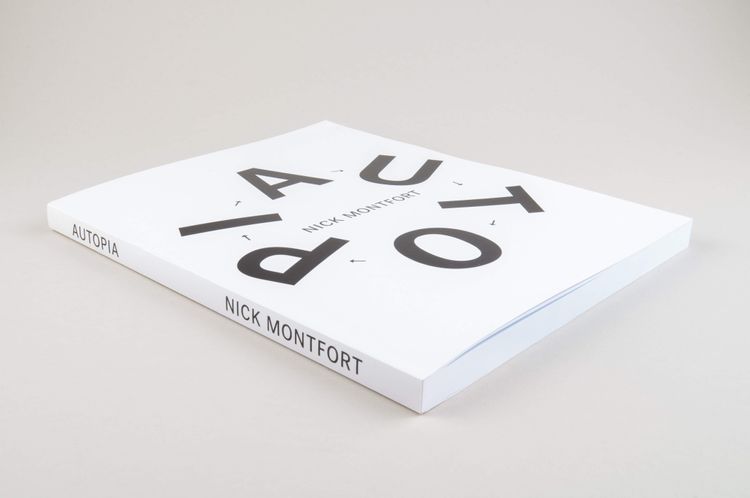AUTOPIA is a computer generated text that consists of product names for cars found on American streets and “–” as a fill character. They are arranged in such a way that they not only mimic cars on lanes but also create poetic mini-narratives due to their semantic meaning—because, as it turns out, cars are often named after animals, especially fast and strong ones (lynx, mustang, eagle), but also after fantastic birds (phoenix, firebird), native peoples of the United States (Dakota, Cherokee), and professions (explorer, pathfinder, aviator). At the same time, many names function as both noun and verb (focus, eclipse) or adjective (noble, premier).
Nick Montfort began categorizing the car names and writing a Python script that “has rules for combining automobile names in ways that are sensitive to the meaning of these names,” to further enhance the meaning making of the headline-style sentences: “The outputs were able to suggest upper-class activities (NEW YORKER GOLFS), offer mathematical results (OPTIMA FIT MATRIX AXIOM), and even relate to contemporary issues such as immigration (AMIGOS FORD RIO)” (Nick Montfort, “Autopia and The Truelist”).
AUTOPIA has been presented in different versions such as a Java- based website, an installation, and a print-on-demand book. The web version formats the output in 2×12′ lanes, animating the text moving left (on the top) and right (on the bottom) respectively, to mimic the flow of traffic from a bird’s-eye view. The book version produces fifty-one lines of text covering every single page in its entirety, thus turning each double-page spread into a gigantic traffic panorama. Apart from 248 pages of output, the book also includes the Python script, allowing for code-based interpretation as well as recreation and altering of the potentially infinite text.
